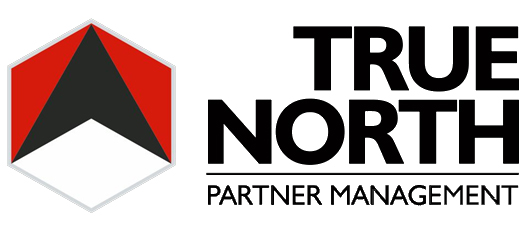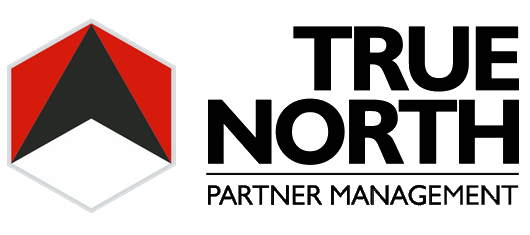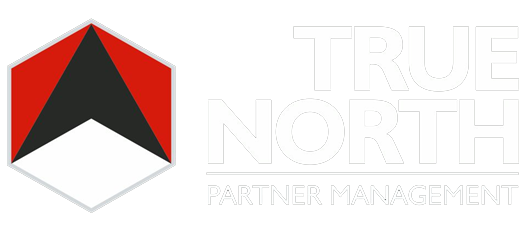The following post originally appeared on Forbes | June 2, 2015
In 2002 the ABA revised their Model Rule of Professional Conduct 1.2(c) to formally allow for the unbundling of legal services: “A lawyer may limit the scope of the representation if the limitation is reasonable under the circumstances and the client gives informed consent.” In other words, law firms no longer had jurisdiction over all facets of legal work. It wasn’t until the Global Financial Crisis, however, that unbundling was truly leveraged by major legal consumers, fertilizing the ground for a purer form of market-based competition. And for the first time, legal process outsourcers (LPOs) entered the market in a material way.
One of the most disruptive and successful of the new entrants at the time was Pangea3, an LPO that was cofounded by David Perla, former Monster.com Vice President – Business & Legal Affairs. Seen by many industry experts as the standard for LPOs, it was acquired by Thomson Reuters in 2010 and has since grown to become the “largest pure-play LPO company globally.”
Well, no stranger to market disruption, in 2014 Bloomberg BNA hired Perla on as president of Bloomberg Law, which services the informational and business needs of Big Law and in-house legal consumers. Setting out to sink their teeth into the quickly expanding legal technology market, with Perla’s help they are now launching an important new technology to the Bloomberg Law platform called Bloomberg Law: Corporate Transactions, which is focused on doing to the corporate transactional market what on-line databases of case law did for litigation.
Today I speak with Perla to get his view on, among other things, the shifts we’ve seen in the market, the role that technology plays, and where the market is headed. See our exchange below:
On Whether All Firms Are Affected By The Changing Legal Marketplace
Parnell: From your view point do you think there are any firms that are above the fray at this point; that don’t need to respond to the changing market conditions?
Perla: I don’t think any firm is above the fray. And I think in different ways they’re all using technology to address changes in the legal industry. But depending on the competitive position of the firm, they may be focused on different technologies to address different challenges.
With Bloomberg Law, we look at our mission as doing three things: First, we want to help firms grow their top line. That’s what people might call the “business of law.” We’re in the business of helping them develop new and valuable clients.
Second, we want to help firms provide world-class counsel. That’s what some people call “the practice of law,” which is being a great lawyer. We want to help them get to the right answer — the right case, the right document, the right regulation — as quickly and efficiently as possible.
Third, we want to enable firms to maintain their profitability. So how do we charge them for it in a way that lets them at least maintain their profitability, and maximally, grow their profitability? One way is we help them grow their top line revenue. But the other way is also to hold the line on cost, to give them a very transparent pricing methodology.
When you think about these three challenges and technology’s role in providing a solution, I think the difference between the very top law firms and some in the tier below is merely a question of how many of these three business goals they want to address with technology. So your average Am Law 200 firm, particularly firms ranked 101 to 200, are thinking deeply about all three of these issues. Their profitability is a major concern for them. Their ability to practice and have the right tools without breaking the bank is important. But they also need to grow more revenue and differentiate themselves. They need an edge. On the other hand, the top of the Am Law 200 — say the top 20-25 law firms — are focused on different things. They all use tools, but in different degrees. My experience has told me that they’re more focused on the top-line revenue and practice tools. They’re not necessarily looking to technology for profitability.
So if you look at some of the really world-class, top-named law firms, some of those firms are actually very large clients of ours because they use our business development tools. Let me try to explain, because these top-ranked firms are using our tools in ways you might not expect. Not only are they using Bloomberg Law — our web-based product — but some are also sitting with traditional Bloomberg terminals; sometimes more than a dozen terminals. They are using these technologies to anticipate industry trends and to capitalize on those trends. They’re trying to succeed in business development by positioning their firm to be ahead of everyone else, and to be in front of the right client at the right time.
So when oil prices rise or fall, for instance, they know to focus on certain prospects. If a company is announcing lay-offs, they’ll go after that work. They get the deal work; they get the finance work; and they get the benefits work. If people are being fired they want that work. If people are being hired they want that work. They don’t view themselves as being cyclical in any way. They are using news and information to inform their business development efforts. We think this is very smart, and a great use of our tools.
On The Trajectory Of Intelligent Software
Parnell: e-Discovery. With predictive coding and technology assisted review, the software is, in a way, getting more intelligent. It is also hacking away at the bottom of the pyramid, which I believe is a normal evolution. What are your thoughts on the trajectory of this phenomenon? What do you see the progression looking like? Will we at some point move into a full blown artificially intelligent system that is handling most of this work?
Perla: The product that we have just released — Bloomberg Law: Corporate Transactions — has a draft analyzer which immediately lets you find what “market” is, by which I mean the most commonly accepted language for a given corporate deal term. We believe that it is going to do in the drafting world what e-Discovery tools and predictive coding did to the litigation world. It’s going to give you the ability to search against an entire data set and say, “This is what is market, and I can now take the best of what’s market for any given provision.”
This is all a normal evolution. In the litigation world Bloomberg Law is using technology to figure out what the legal principles are in a case, without having to rely on editors and the errors in judgment that entails. We are now using technology to help lawyers figure out what legal language is typically used in a corporate transaction. But it’s all data driven. It’s all empirical. I think it’s short of what I would call artificial intelligence.
We, like others, use what’s called machine learning, which is really algorithms. And with an algorithm, the more data it gets and the more you tweak it, the more the software learns on its own. So the algorithm starts to learn which words are extraneous and which words are not because you’ve taught it to identify patterns. How do you teach it? You write algorithms to identify patterns. What it doesn’t start to do — and this is where we get into AI, even science fiction — it doesn’t learn to think for itself outside of that algorithm. Outside of the series of events statement, it doesn’t teach itself. AI implies it starts to learn and sort of create its own learning system. I don’t believe we’re going to get to that.
On What Is Happening To Top Line Revenue In Law
Parnell: What do you think about the top line in general? If you think about technology kind of “hacking” away the bottom of the pyramid, in a vacuum, in essence, a law firm would have to constrict because it can’t support the same partner rosters. What do you think about that?
Perla: So, we’re using data to determine what the legal principles of a case are. We’re using data to determine what market language is. And frankly this is how machines can perform now: If you input certain information, it can quickly spit out a draft of a document for you, whereas when I was a young M&A associate that took me hours to do.
But this doesn’t put lawyers out of business. It gives clients what they want, which is lawyers as advocates and experts. As Mike Bloomberg said in a meeting on Monday, “Guys, everyone is going to pick up the phone and call their lawyer when there’s a legal problem, right? What our technology does is let the lawyer answer that phone call more quickly, and answer the question more quickly, and with more confidence.”
So the reason that no lawyer is going out of business is that there’s simply more work to do. There’s more regulation. There’s more law. There are more statutes. Businesses are becoming fully global. No one’s losing their job. In fact, their job is going to get a lot more interesting because they’re going to get into the substantive legal work, fast.
And this gets to your first question: If you made your money in the past by having relationships from which you were given commodity legal work, you’re now in a bad position because everyone can do that legal work. Everyone knows what market is now. Everyone can figure out what the case needs. Everyone can get to the right cases fast. So you can’t differentiate yourself by saying “Well, I’m a really smart lawyer.” Everyone is a really smart lawyer. Now you have to be either a great advocate, or you have to be absolutely expert in a particular field. And that’s why some of those firms outside of the elite are spending their time trying to differentiate themselves.
Parnell: So what do you think about the top line? It sounds like from your viewpoint that the top line is just going to continue getting bigger and bigger, which will continue to feed the partnership rosters.
Perla: I think that’s right. And I think if you look at the data, revenues are up across the legal market. That growth may be unevenly distributed, but broadly, legal revenues are up, meaning corporations and high net worth families are spending more. Also, when you talk to GC’s and read the surveys, it’s clear they expect to pay more. Corporations are doing better. Their revenues are growing. Loosely speaking, businesses are allocating legal budget based on a percentage of revenue, and GC’s are prepared to spend more in 2015 than they spent in 2014.
The key, then, if you’re a lawyer is how do I make sure I’m getting my proportionate share of that revenue increase? It’s a very good question. You don’t want to be on the commoditized side of legal work. You don’t want to be in the unspecialized side of it. You want to be able to show that you have something that is different and unique.
On Liberalization Here In The U.S.
Parnell: So, taking a broader look at the market, do you think that we will liberalize here in the U.S. like they’ve done in the UK and Australia? And with that answer in mind, do you think that the evolutionary track of BigLaw mirrors that of the accounting and management industries? You know, the Big Four…
Perla: I don’t think we’re going to liberalize in any meaningful way, for two reasons:
First, at the large law level — and that’s actually the level where we are seeing the most competition from the accounting firms and the consulting firms today in the U.S. — the clients are not really pushing for it. The big corporations and high net worth entities are not really pushing for liberalization in any meaningful way. They prefer to push on the business side as regards cost. Whether it’s fixed fee arrangements, alternative fee arrangements, or it’s unit pricing, most corporations don’t actually care. They just want to come in within a budget.
Second, at the small law level, in the domain of the ABA and local bar associations, they have every reason to not want liberalization. This part of the profession is really a guild, and it’s in their economic interest to protect that guild. It’s the same reason that it is very, very difficult for foreign trained lawyers to become licensed here. At the small law level they simply don’t want more lawyers than we already have. They are not going to push for, or quietly permit, liberalization.
So the combination of a lack of demand from large corporations and a very protectionist mentality in small law means that you won’t see any movement towards liberalizing in the U.S.
That said, I think you are seeing the movement of legal-like services over to non-law firm entities, such as accounting firms and consulting firms. Even my old business — I was in the legal outsourcing business — in effect was a large company of non-lawyers doing legal work, but exclusively for law firms and legal departments and not for consumers. That’s what the entire legal outsourcing business is really focused on: Doing legal work, but not as a law firm. And the accounting firms, all the Big Four, are playing very heavily in this space.
On Whether BigLaw Will Follow In The Steps Of The Big Four
Parnell: So, from a 25K ft. view, do you see the same type of bifurcation happening in Big Law over the next 10-15 years as happened in the accounting world?
Perla: I see more stratification happening, but I don’t know that it’s going to be a bifurcation. I was having lunch last month with the U.S. managing partner of a firm that is really trying to build that accounting model — what the Big Four has done. His goal is to be everywhere so that his firm can service any client, anywhere in the world, on any matter, at any time of day. There are a bunch of firms that intend to get to that level of scale.
But the reason that I don’t think that the legal market is going to bifurcate like accounting is simple: In the heyday of public accounting there were what, 10 larger firms? Which then consolidated from ten to eight to six to four. Law is much more fragmented. If you look at the number of firms that have over 1,000 lawyers, there are plenty. And then within the AmLaw 100, the number of firms that have over 500 lawyers is probably almost all of them, with a few exceptions.
So it’s very hard to envision a bifurcation where you get 10 or 15 of the top, and then all these local, much smaller firms at the bottom. What I do think you’re seeing is stratification of these behemoths; very high earning firms and then all the rest, the national and regionals.
On Individual Attorneys Future-Proofing Themselves
Parnell: So taking this down to the individual attorney. How would you direct them to “future proof” themselves? Let’s say you have a junior partner; how would you advise them to develop their skillset, their brand, over the next 10 years to render themselves basically invaluable?
Perla: I think what we are saying with Bloomberg Law is that if you want to be future proof, you need the right tools. And the reason we think we’re the answer is that we’re focused on all three of those things that I mentioned at the outset of our conversation.
So to future proof yourself you’re going to have to attend to your top line, which is hard. No one inherits business anymore. Outside of the main firms — you know, those with institutional clients — you’ve got to attend to your top line.
You also have to attend to your bottom line or you’re not going to be in business. So that means that either you have to learn something about business, or you’ve got to work with providers that are not looking to extract every dollar from you every time you turn on a meter, and that are not looking to play pricing games with you.
And then of course you have to provide world-class counsel in a way that differentiates you. You need tools that not only give you that right answer, but get it to you fast, and also get it to you in a way that lets you differentiate what you do.
The rest of what attorneys do — the relationship building, the networking, the traditional business development — they’ve had to do that for generations. That’s not new. Anyone who’s ever been a rainmaker has had to have relationships. Today it’s not enough, because everyone is looking to steal your business and everyone is pitching your client. You have to be focused on those three things to be future proof.
On Bloomberg Law’s Newest Release
Parnell: You said that you’re focused on future proofing attorneys and law firms at Bloomberg Law. So how are you guys doing that?
Perla: We think about everything we do in workflow terms, and that is especially true with our new product, Bloomberg Law: Corporate Transactions. The way a transactional lawyer thinks is different than a litigator. A litigator researches and then writes, argues, and goes through the procedural elements of litigation. Corporate lawyers, on the other hand, really organize what they do in three ways: The first is drafting documents; the second is researching applicable laws, which are very often regulations; and the third is staying aware of current news that impacts corporate transactional practice. So we’ve taken all three of these important components and built a product that customizes them for an individual’s practice and clients.
One component of our new product is called “Draft Analyzer.” Built on an algorithm that has mapped the entirety of the EDGAR database, it allows you to drop in a clause, a sentence, a paragraph, or a document and it will run that document against every publicly filed document with the SEC to help you determine what is the empirical “market” standard for that document. And because lawyers are skeptical, it will take you into the 300, 400, 500 sources so that you can evaluate how the market standard was determined.
Another component is a vast database of precedents, which we call “Deal Maker.” This database can be used to pull a precedent to help you get oriented. Or you can take a precedent from there, drop it into Draft Analyzer and get a market standard version of whatever you’re looking to draft – an underwriting agreement for project finance, for example.
And as a third component, we’ve done something that I believe no one has ever done before, simply because they don’t have the data that we have at Bloomberg. We’ve started with merger and acquisition data and we’re adding capital market data and loan search data. We call this component “Deal Analytics.” Lawyers are often asked questions about the underlying financial terms of deals, and how terms in a given deal compare to market terms, averages, etc. We pull underlying data about deals, sliced and diced in myriad ways, and put it in the hands of lawyers. This is something only Bloomberg Law can deliver because the data is unique to Bloomberg.
In addition, we’ve incorporated legal and other league tables directly into our new product. As most people know, Bloomberg has all that information. We’ve poured over the information that a transactional lawyer would need and we’ve put it right on Bloomberg Law.
We are also adding features we think lawyers will need to differentiate themselves like customized league tables that let lawyers show clients and prospects why a given law firm is the best in a particular industry, region, deal size, deal type, etc. High-level deal tables are widely available, but they favor the biggest firms with the highest dollar volume of deals. Our league table will soon be fully customizable, and will level the playing field for hundreds of law firms by letting them show prospects and clients where a firm ranks in very specific types of deals, industries, regions, etc.



